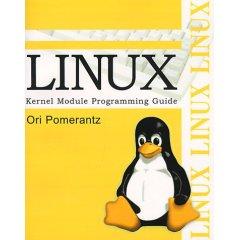کامپیوتر و اُپن سورس(Computer & Open Source)
آموزش دروس رشته کامپیوتر - نرمافزار اشنایی باسخت افزار سیستم عامل لینوکس شبکه برنامه نویسی معرفی نرم افزارکامپیوتر و اُپن سورس(Computer & Open Source)
آموزش دروس رشته کامپیوتر - نرمافزار اشنایی باسخت افزار سیستم عامل لینوکس شبکه برنامه نویسی معرفی نرم افزارایران به جمع کشورهای پیشرفته سازنده قویترین ابررایانه ها پیوست
با ساخت این سامانه که قویترین ابررایانه فوق سریع ساخته شده در خاورمیانه محسوب می*شود، ایران به جمع چند کشور پیشرفته دارای این فناوری می*پیوندد
دکتر احمد معتمدی مجری این طرح روز دوشنبه طی یک مصاحبه مطبوعاتی ضمن معرفی این ابررایانه که با همت محققان مرکز تحقیقات پردازش*های فوق سریع در دانشگاه صنعتی امیرکبیر ساخته شده است، افزود این ابررایانه که به سفارش سازمان هواشناسی ساخته شده است تا ماه آینده برای پیش بینی وضع هوا در این سازمان راه*اندازی می*شود
در این طرح که حاصل تلاش دو ساله این گروه تحقیقاتی است 216 هسته پردازشی اپترون 2 گیگاهرتز با بهره*گیری از فناوری کلاستر به صورت موازی عمل می*کنند
این سامانه حافظه*ای برابر56 گیگابایت دارد و ظرفیت ذخیره*سازی آن معادل 5800 گیگابایت است. این ابررایانه دارای حداکثر توان پردازشی 860 میلیارد عمل در ثانیه است
این درحالی است که در قوانین تجارت جهانی، ابررایانه*های قویتر از 190 میلیارد عمل در ثانیه کالای راهبردی محسوب شده و فروش آنها مشمول تحریم می*گردد
سیستم عامل مورد استفاده در این سامانه لینوکس است و یک نرم*افزار نیز برای مدیریت، نظارت و کنترل سیستم توسط محققان این مرکز تهیه شده است. همچنین مجموعه*ای از نرم*افزارهای کاربردی مانند" ام ام 5 " و" ای آر پی اس "برای پیش*بینی وضع هوا بر روی این ابررایانه نصب و مورد استفاده قرار گرفته است. نتایج بدست آمده در این طرح به تایید کارشناسان شرکتهای اروپایی نیز رسیده است
البته این خبر یا مطلب قدیمی هست ولی گفتنش خالی از لطف نیست!

Cross-Platform Development in C++ Building Mac OS X, Linux , Win
Cross-Platform Development in C++ is the definitive guide to developing portable C/C++ application code that will run natively on Windows, Macintosh, and Linux/Unix platforms without compromising functionality, usability, or quality.
Long-time Mozilla and Netscape developer Syd Logan systematically addresses all the technical and management challenges associated with software portability from planning and design through coding, testing, and deployment. Drawing on his extensive experience with cross-platform development, Logan thoroughly covers issues ranging from the use of native APIs to the latest strategies for portable GUI development. Along the way, he demonstrates how to achieve feature parity while avoiding the problems inherent to traditional cross-platform development approaches.
This book will be an indispensable resource for every software professional and technical manager who is building new cross-platform software, porting existing C/C++ software, or planning software that may someday require cross-platform support.
Build Cross-Platform Applications without Compromise
Throughout the book, Logan illuminates his techniques with realistic scenarios and extensive, downloadable code examples, including a complete cross-platform GUI toolkit based on Mozilla’s XUL that you can download, modify, and learn from. Coverage includes
- Policies and procedures used by Netscape, enabling them to ship Web browsers to millions of users on Windows, Mac OS, and Linux
- Delivering functionality and interfaces that are consistent on all platforms
- Understanding key similarities and differences among leading platform-specific GUI APIs, including Win32/.NET, Cocoa, and Gtk+
- Determining when and when not to use native IDEs and how to limit their impact on portability
- Leveraging standards-based APIs, including POSIX and STL
- Avoiding hidden portability pitfalls associated with floating point, char types, data serialization, and types in C++
- Utilizing platform abstraction libraries such as the Netscape Portable Runtime (NSPR)
- Establishing an effective cross-platform bug reporting and tracking system
- Creating builds for multiple platforms and detecting build failures across platforms when they occur
- Understanding the native runtime environment and its impact on installation
- Utilizing wxWidgets to create multi-platform GUI applications from a single code base
- Thoroughly testing application portability
- Understanding cross-platform GUI toolkit design with Trixul
The Linux Kernel Module Programming Guide
Book Description
So, you want to write a kernel module. You know C, you've written a number of normal programs to run as processes, and now you want to get to where the real action is, to where a single wild pointer can wipe out your file system and a core dump means a reboot. Welcome to the club. Linux Kernel Module Programming Guide is for people who want to write kernel modules. It takes a hands-on approach starting with writing a small "hello, world" program, and quickly moves from there. Far from a boring text on programming, Linux Kernel Module Programming Guide has a lively style that entertains while it educates. Linux Kernel Module Programming Guide is one of the key documents of the Linux Documentation Project, an online compilation of freely distributed manuals and how-to guides on the popular Linux operating system. This book is a printed version of the online documentation, and is provided as a convenience for those who prefer printed manuals. iUniverse.com Computer Books are composed of freely available online computer manuals, industry standard specifications, and electronically distributed computer-programming guides. They include open documents' collections of industry specifications and standards and a collection of the best open source documentation on the Web...the most complete open source library available anywhere. Each book contains the complete, unabridged text of the original document. The on-demand publishing process gives you the actual text of the online document in a convenient, inexpensive, easy-to-use format. And remember...iUniverse.com donates a portion of the profits from open document and open source books to support the mission of the free software community.

